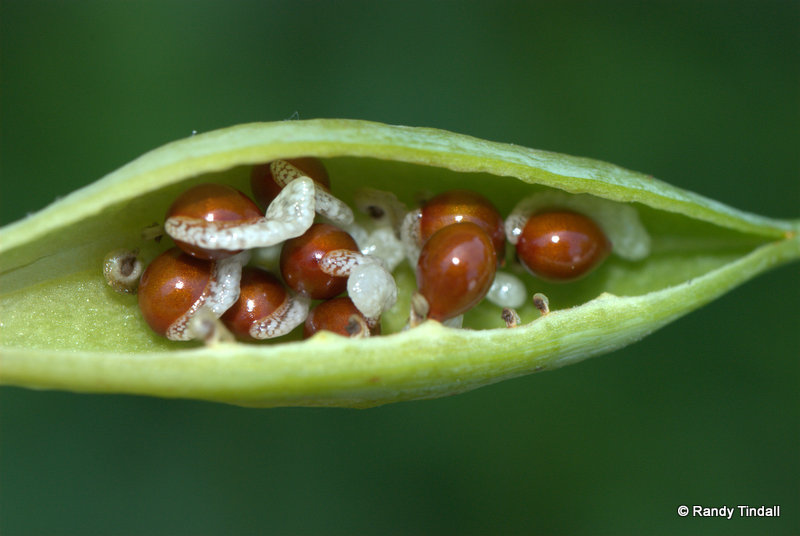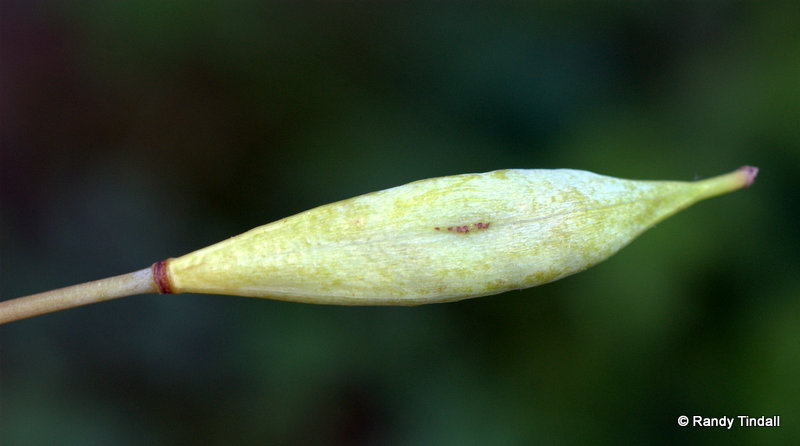Let us again consider the Bloodroot, one of spring’s most lovely and ephemeral visitors. Having emerged in March, the little herd in our yard is just now finishing with its crop of seeds, and here they are. Almost, but not quite, as pretty as the blossoms themselves, these seeds have a rather special quality.
You see, somewhere along the line this gorgeous, but not very mobile, plant decided that if it was ever going to see the world, it would need a little help in conquering distances. After whatever passes for long consideration in the plant world, it settled on ants as the helper of choice and picked the strategy known as “myrmecochory“, although I doubt the Bloodroot is aware of that. It involves convincing ants to move your seeds some distance away from you and to deposit them in a favorable location for germination.
It does it by offering the ant a snack, which induces the insect to carry the seed home to the nest, eat the yummy part and discard the seed in a perfect place for it to grow. The ant gets fed, while the Bloodroot gets to start a new generation a few feet or yards away. This is not far, but a journey of a thousand miles has to begin somewhere, I’m told.

Bloodroot seed on ground waiting for pickup. The yummy part is the white wormy thing on top, called an “elaiosome”.
It is not the only member of the flora to use more movious organisms to its advantage—just check out the horrendous spread of Asian Bush Honeysuckle by birds, or the spread of oak trees by squirrels carrying and burying acorns. It’s not even the only one to use ants. But it’s still clever.
I mean, I’ve never managed to get anyone to do my gardening for me, although I tried offering a friend beer once. He just sat and watched me dig while he drank his brew, which really increased my respect for Bloodroots.
You can help the Bloodroots out, too, by watching for the seeds to mature. Here is a seed pod ready to pop open and scatter its cargo. See the little brown line?
If you have Bloodroots in your property, keep watch until the pods look like this or until some have begun to open. Then the seed can be collected and grown, helping to maintain and disperse this wonderful plant, which is having trouble maintaining populations in the wild. You can plant some in a good location in the woods, or give seedlings to your friends. I don’t know if the elaiosome will be big enough to entice you, but having the plant around and helping to keep it around should be incentive enough.
I’ll even toss in a beer.



I’m going out in the woods tomorrow to look for some ripe seed pods. Very cool!
Good luck, Henry! Might be a little late, but you could get lucky.
Nice writing, beautiful photo’s, great sense of humor. Well done!
No Bloodroots here in Ireland I’m afraid, but I can always accept the pint…?
Thanks, Miss80. How about a Guinness?
What an interesting seed! We don’t have such a thing here in Brazil.
Animal-plant interections are always fascinating!
Regards,
Piter K. Boll
Thanks for commenting, Piter. I would be very surprised if Brazil did not have something similar to this, considering the incredible diversity of your country. Relations between organisms in nature are indeed fascinating. They seem to take any and all imaginable forms.